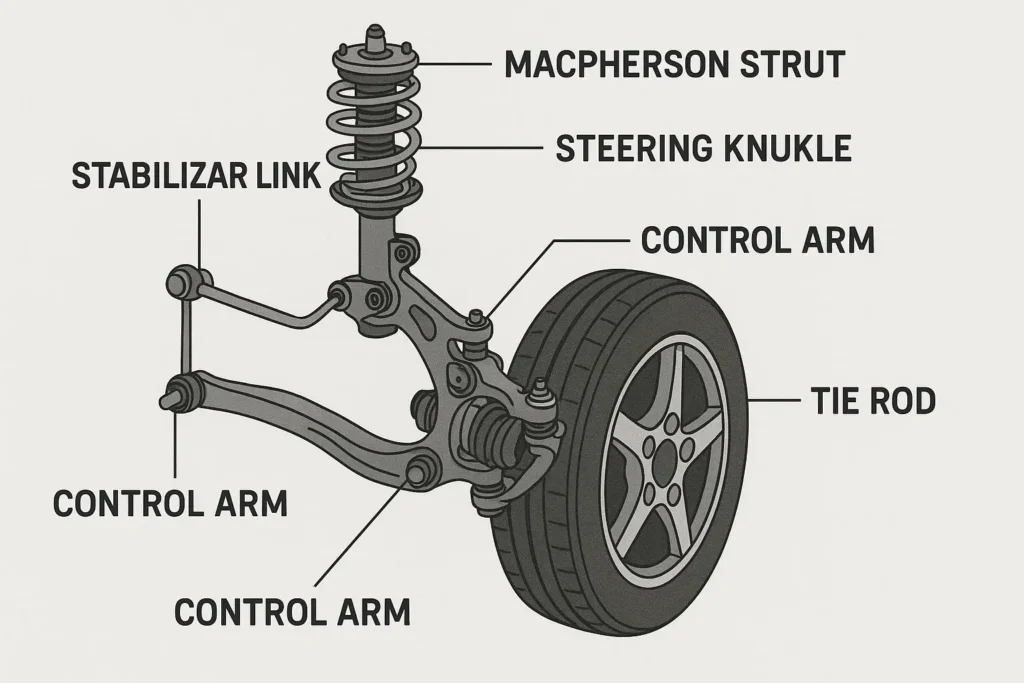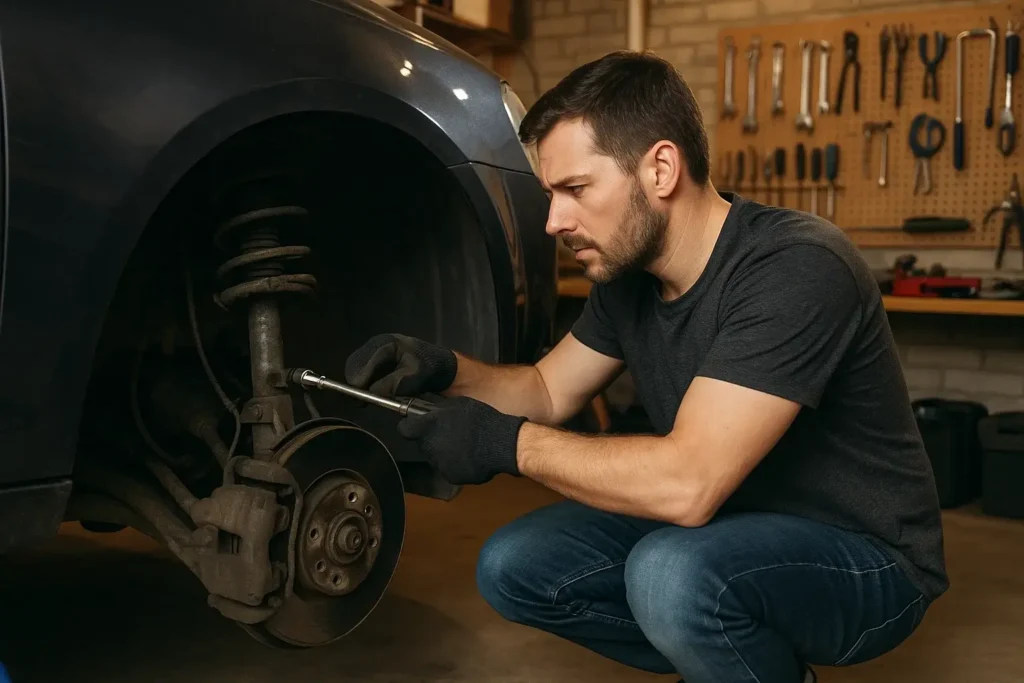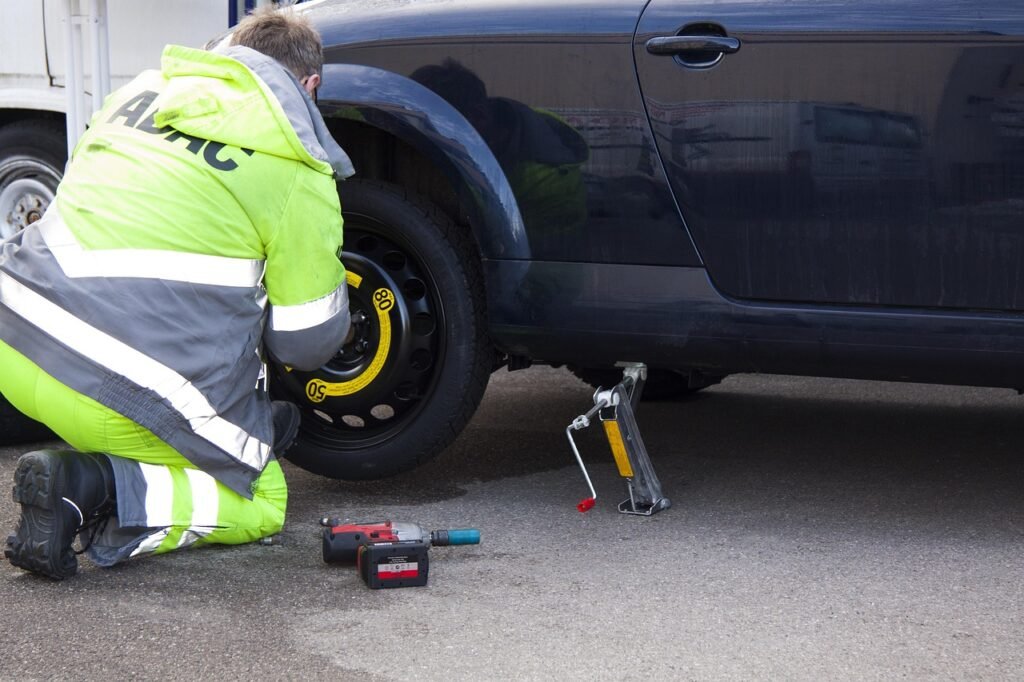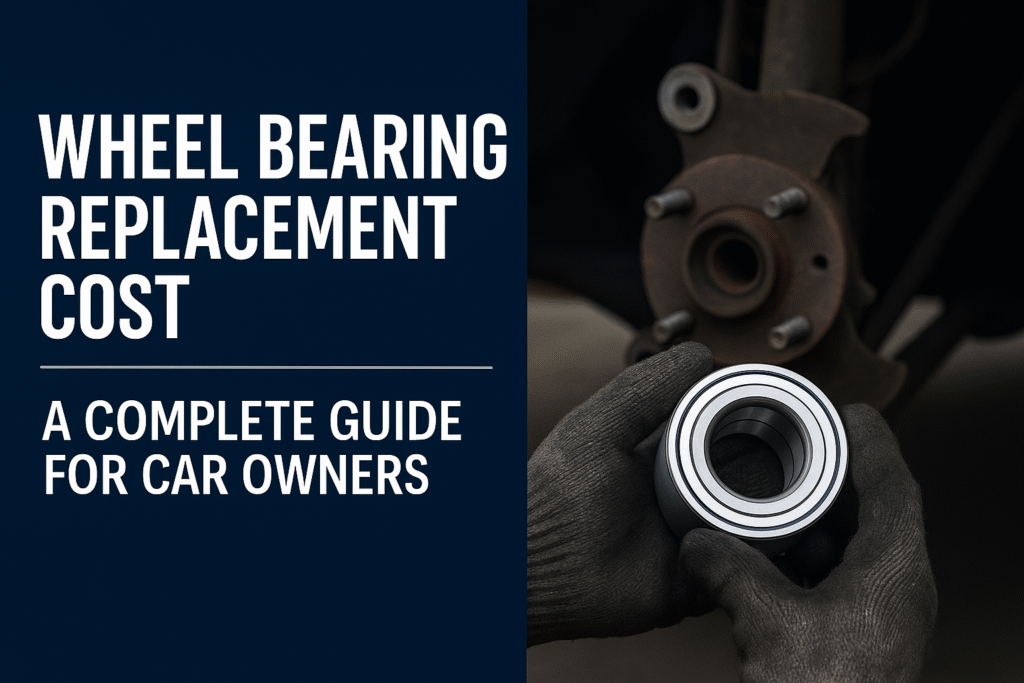Whether you’re navigating bumpy backroads or cruising down the highway, your car’s suspension system plays a critical role in how comfortable and safe your ride feels. Yet for many drivers, it’s a bit of a mystery.
In this comprehensive guide, we’ll break down everything you need to know about car suspension systems from the different types and how they work, to signs of wear and upgrade options. Whether you’re a casual car owner or an auto enthusiast, you’ll leave with a better understanding of how your car connects to the road.
What Is a Car Suspension System?
The car suspension system is a complex network of components that connects your vehicle to its wheels while managing ride quality and handling. It absorbs the impact of road irregularities, stabilizes your vehicle, and ensures your tires maintain proper contact with the road.
Core Function of a Suspension System
Your suspension system has three primary jobs:
- Absorb shocks from road surfaces (potholes, bumps)
- Keep your tires on the road at all times
- Support vehicle weight and distribute forces during braking, turning, or acceleration
Key Components of a Suspension System
Most car suspension systems consist of:
- Springs – Coil, leaf, or air springs that absorb vertical movement
- Shock absorbers/struts – Dampens the spring’s motion
- Control arms – Connect wheels to the vehicle frame
- Bushings and stabilizer bars – Reduce vibration and sway during turns

Types of Car Suspension Systems
Not all suspension systems are created equal. Let’s explore the most common types used across different vehicles.
Dependent (Solid Axle) Suspension
Also called live axle suspension, this system connects the wheels via a solid beam. It’s commonly found in trucks, vans, and off-road vehicles because of its load-handling durability.
Pros:
- Strong and simple
- Handles heavy loads well
Cons:
- Rougher ride
- Poor handling at higher speeds
Independent Suspension
An independent suspension system allows each wheel to move separately, resulting in a smoother ride and better handling. Most passenger cars and performance vehicles use this system.
Types of independent suspension:
- MacPherson Strut: Cost-effective, widely used in front-wheel-drive cars
- Double Wishbone: More complex but offers precise handling
- Multi-Link: Combines the best of both worlds for high-end vehicles
Air Suspension and Adaptive Systems
Modern luxury and electric vehicles often feature air suspension or adaptive damping systems.
- Air Suspension: Uses airbags and compressors to adjust ride height
- Adaptive Suspension: Electronically adjusts damping force in real time
Benefits:
- Smoother ride
- Better ground clearance
- Enhanced performance on demand
How Car Suspension Affects Performance and Ride Quality
A properly functioning suspension system is crucial not just for comfort but also for vehicle control, braking, and fuel efficiency.
Comfort vs. Handling Tradeoffs
Manufacturers often need to balance:
- Comfort: Soft suspension absorbs more bumps but may feel “floaty”
- Handling: Stiffer suspension improves cornering and control but may be harsh on uneven roads
Performance vehicles prioritize tight handling, while touring vehicles emphasize comfort.
Impact on Tire Wear and Fuel Efficiency
Worn suspension parts can:
- Lead to uneven tire wear from misalignment or poor contact
- Increase rolling resistance, which can lower fuel economy
A well-maintained suspension contributes to better overall vehicle efficiency.
Signs of Suspension Problems
Many drivers don’t realize their suspension is failing until it’s too late. Watch for these warning signs:
Warning Signs to Watch For
- Nose diving when braking
- Vehicle pulling to one side
- Bouncy or unstable ride
- Clunking sounds over bumps
- Uneven tire wear
DIY Checks You Can Perform
Before heading to a mechanic, try these quick checks:
- Bounce Test: Push down on each corner of the car; it should rebound once or twice
- Visual Inspection: Look for leaking shocks or sagging springs
- Listen While Driving: Pay attention to noise when turning or braking
How to Maintain Your Car’s Suspension System
Like any system in your car, the suspension needs periodic inspection and care.
Routine Inspections and Servicing
- Have your suspension checked during every major service
- Inspect shocks/struts every 50,000 to 100,000 miles
- Get an alignment at least once a year or when replacing tires
Driving Habits That Help or Harm
Avoid:
- Driving aggressively over potholes or speed bumps
- Overloading your vehicle
- Ignoring unusual ride behavior
Do:
- Drive smoothly over uneven roads
- Maintain tire pressure
- Use quality components when replacing suspension parts
Upgrading Your Suspension: Performance vs. Comfort
For automotive enthusiasts or those customizing their vehicle, upgrading the suspension is a popular modification. But it’s not just about looks it can also transform how your car handles.
Performance-Oriented Upgrades
- Lowering Springs or Coilovers: Reduces center of gravity for better cornering
- Upgraded Sway Bars: Minimizes body roll during fast turns
- Adjustable Dampers: Let you fine-tune stiffness for track days
Ideal for: sports cars, tuners, or track-day builds
Comfort and Touring Setups
- Air Suspension Kits: Adjustable height and plush ride
- Progressive Rate Springs: Softer on small bumps, firmer when compressed
Best for: luxury vehicles, long-distance touring, or show cars
Note: Always ensure your upgrades are compatible with your car’s frame and suspension geometry.
Final Thoughts
Your car’s suspension is one of the most overlooked but essential systems. Whether you’re seeking a smoother ride, better handling, or planning an upgrade, understanding how suspension works empowers you to make smarter decisions and helps your car last longer. Maintaining your suspension isn’t just about comfort it’s about safety, control, and longevity.
FAQs
Is it safe to drive with a bad suspension?
No. A worn suspension reduces control, increases stopping distance, and accelerates tire wear.
Can I replace just one shock or strut?
It’s always best to replace shocks or struts in pairs (both front or both rear) for balanced handling.
How much does suspension repair cost?
Repairs can range from $300 to $1,500+, depending on the vehicle and whether it involves shocks, control arms, or bushings.



